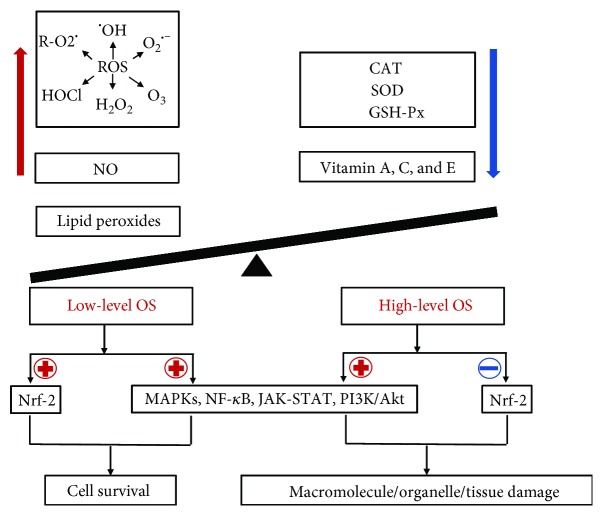Figure 1.
The process of oxidative stress (OS) generation. OS occurs when prooxidants (e.g., ROS, NO, and lipid peroxides) outbalance antioxidant defenses (e.g., SOD, CAT, and GSH-px). OS mediates in physiological or pathological events by activating/suppressing multiple redox signaling pathways (e.g., Nrf-2, MAPK, NF-κB, PI3K/Akt, and JAK-STA). For example, high-level OS may induce the damage of macromolecules (DNA, proteins, and lipids), organelles (mitochondria and membranes), and even the whole tissues, whereas low-level OS may contribute to cell survival. In this process, ROS, including radical and nonradical ROS such as O2•-, •OH, R−O2•, O3, HOCl, and H2O2, play a pivotal role in the generation of OS. ⊕ means “to promote or enhance”; ⊖ means “to inhibit or suppress.”

